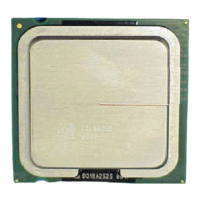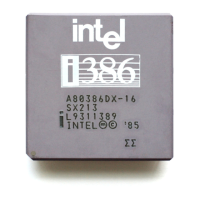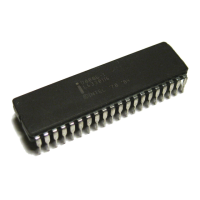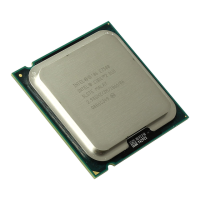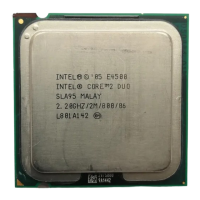Dual-Core Intel® Xeon® Processor 5100 Series Thermal/Mechanical Design Guide 45
Thermal/Mechanical Reference Design
2.4.7.2 Thermal Interface Material (TIM)
A TIM must be applied between the package and the heatsink to ensure thermal
conduction. The CEK reference design uses Shin-Etsu* G751 thermal grease.
The recommended grease dispenses weight to ensure full coverage of the processor
IHS is given below. For an alternate TIM, full coverage of the entire processor IHS is
recommended.
It is recommended that you use thermally conductive grease. Thermally conductive
grease requires special handling and dispense guidelines. The following guidelines
apply to Shin-Etsu G751 thermal grease. For guidance with your specific application,
please contact the vendor. Vendor information is provided in Appendix E. The use of a
semi-automatic dispensing system is recommended for high volume assembly to
ensure an accurate amount of grease is dispensed on top of the IHS prior to assembly
of the heatsink. A typical dispense system consists of an air pressure and timing
controller, a hand held output dispenser, and an actuation foot switch. Thermal grease
in cartridge form is required for dispense system compatibility. A precision scale with
an accuracy of ±5 mg is recommended to measure the correct dispense weight and set
the corresponding air pressure and duration. The IHS surface should be free of foreign
materials prior to grease dispense.
Additional recommendations include recalibrating the dispense controller settings after
any two hour pause in grease dispense. The grease should be dispensed just prior to
heatsink assembly to prevent any degradation in material performance. Finally, the
thermal grease should be verified to be within its recommended shelf life before use.
The CEK reference solution is designed to apply a compressive load of up to 200 N [45
lbf] on the TIM to improve the thermal performance.
2.4.7.3 CEK Spring
The CEK spring, which is attached on the secondary side of the baseboard, is made
from 0.80 mm [0.0315 in.] thick 301 stainless steel half hard. Any future versions of
the spring will be made from a similar material. The CEK spring has four embosses
which, when assembled, rest on the top of the chassis standoffs. The CEK spring is
located between the chassis standoffs and the heatsink standoffs. The purpose of the
CEK spring is to provide compressive preload at the TIM interface when the baseboard
is pushed down upon it. This spring does not function as a clip of any kind. The two
tabs on the spring are used to provide the necessary compressive preload for the TIM
when the whole solution is assembled. The tabs make contact on the secondary side of
the baseboard. In order to avoid damage to the contact locations on the baseboard, the
tabs are insulated with a 0.127 mm [0.005 in.] thick Kapton* tape (or equivalent).
Figure 2-23 shows an isometric view of the CEK spring design.
Table 2-9. Recommended Thermal Grease Dispense Weight
Processor Minimum Maximum Units Notes
TIM Dispense weight 400 mg Shin-Etsu* G751. Dispense
weight is an approximate
target.
TIM loading provided
by CEK
18
80
30
133
lbf
N
Generated by the CEK.
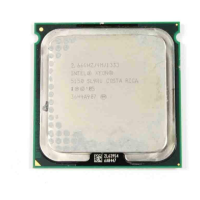
